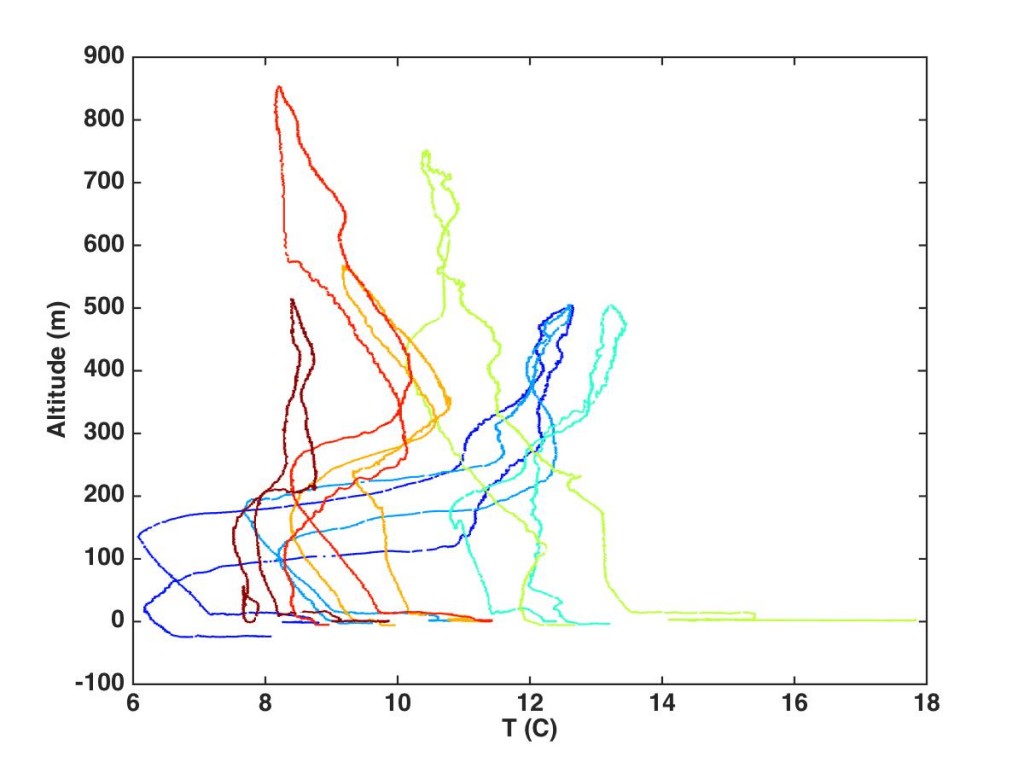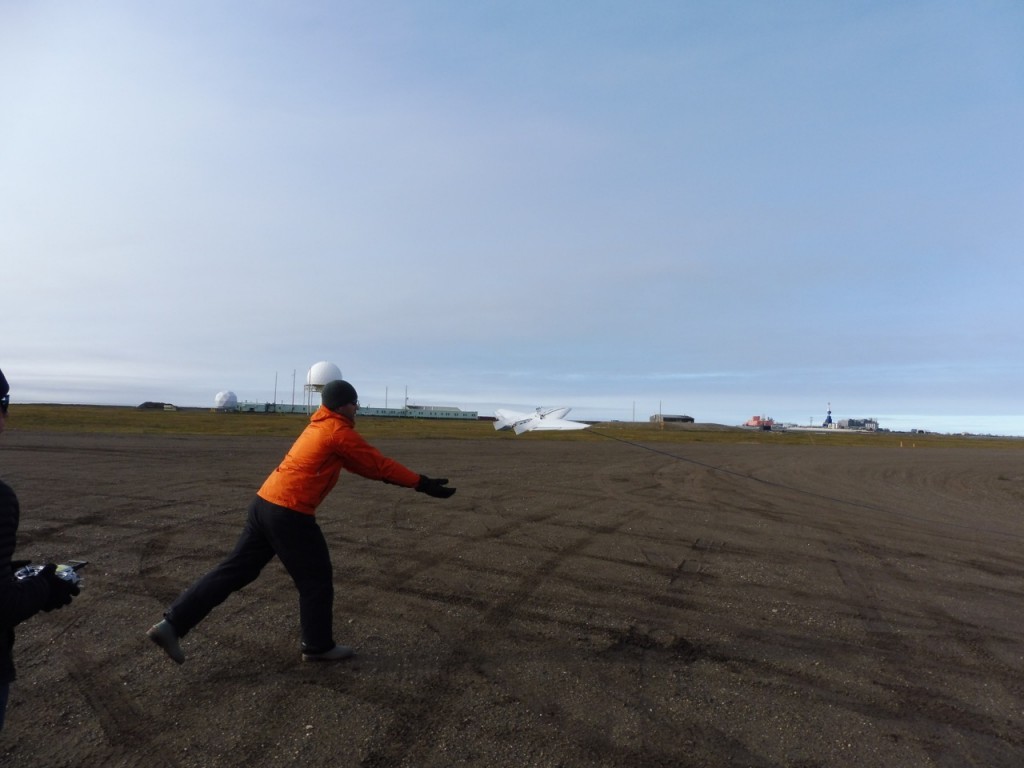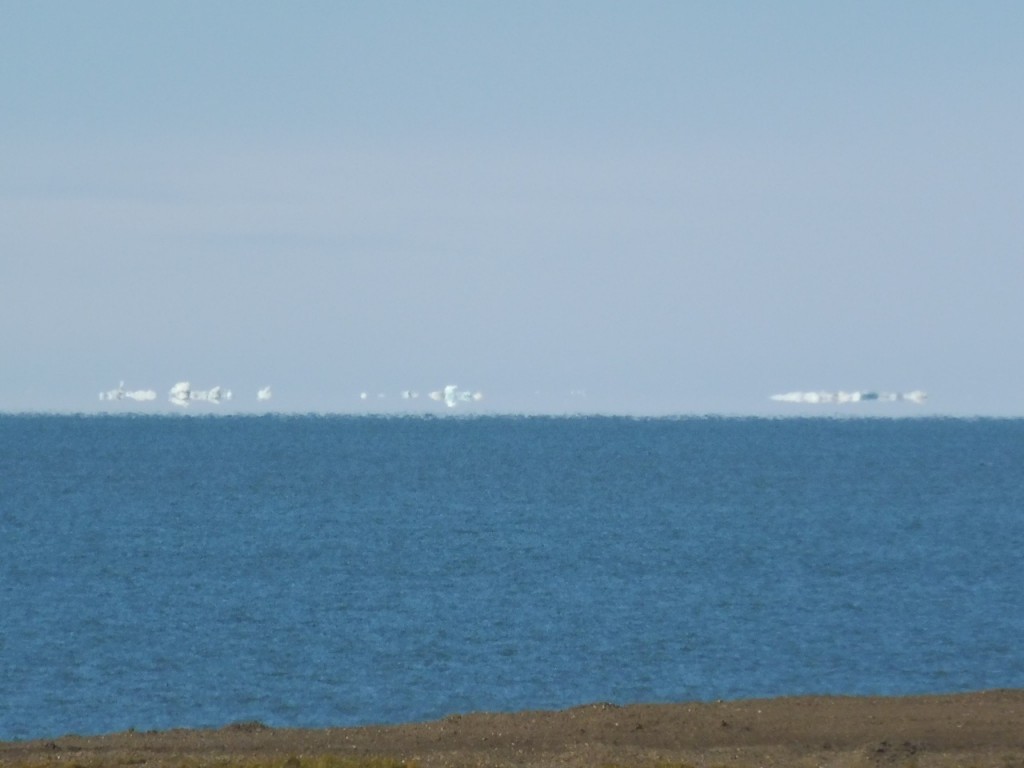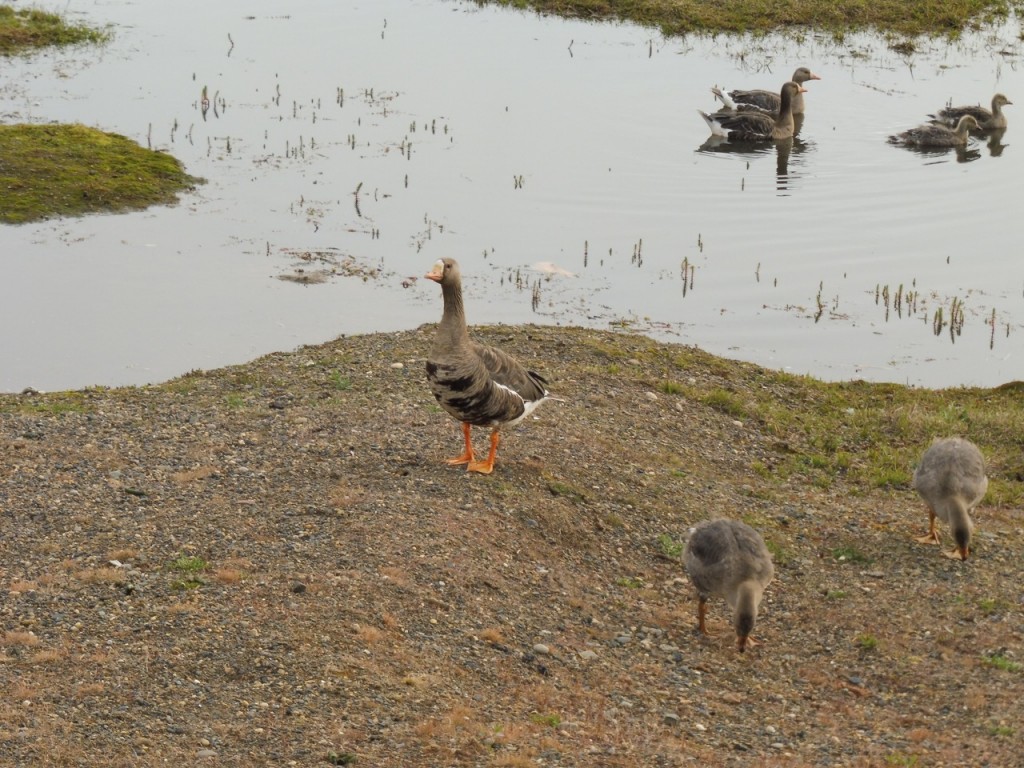Having flown the series of profiles yesterday afternoon and evening, we were very much looking forward to more of the same today. When we woke up this morning, the winds had died down, but unfortunately there was a very thick blanket of shallow, but very dense fog. While this would have been very exciting to make measurements in if our autopilot was not getting crippled by the radar at low altitude, flying manually in fog is a non-starter since it would be very difficult for the pilot to see the aircraft as they’re operating. So, we spent an hour or so working on our computer programs, doing laundry (it still needs to get done, even in the field!), and catching up on e-mails. Once the fog lifted, we headed straight out to the runway to begin flying again and were able to launch our first plane right around 900 am. It seems as though our current strategy of rocketing up from the surface to 200 m, and then doing a gradual profile up from there is working very well. We were able to successfully repeat this throughout the day, without getting zapped by the radar once.

Morning sunshine to the east of Oliktok Point. The shallow fog layer that grounded us this morning can be seen along the horizon.
The weather was very variable today, with the atmosphere warming rapidly after the fog burned off (it got up to 60 degrees today (!) leading to the first widespread presence of mosquitos). However, the wind shifted in the middle of the day and the afternoon cooled down dramatically. The day’s temperature profiles are shown below, and illustrate how variable the atmosphere was today. The blue-colored profiles were the first from this morning, while the red profiles were the last ones before dinner. You can see the different layers, the near-surface air heating quickly throughout the morning and the subsequent decrease in temperature towards the later afternoon.

Profiles from the seven flights flown today. The blue colored profiles were from earlier in the day, the green ones from the middle of the day, and the red ones from later on in the day.
Unfortunately, this evening we were not able to profile due to the presence of a few grizzly bears. One of these bears was really massive — probably the size of a small car — and seemed to like the idea of hanging around the hangar and the AMF3. Fortunately, Al had spotted them from a long way away, and had kept a careful eye on their movement and progress. I am really amazed at how quickly these animals can cover a large distance over the tundra. The presence of the bears, in combination with more rolling fog banks, made it unsafe for us to continue our flights after dinner. Tomorrow is another day, but for now, I’ll leave you with some more photos of the wildlife here, and some mirage photos of the offshore sea ice, taken by Will.




